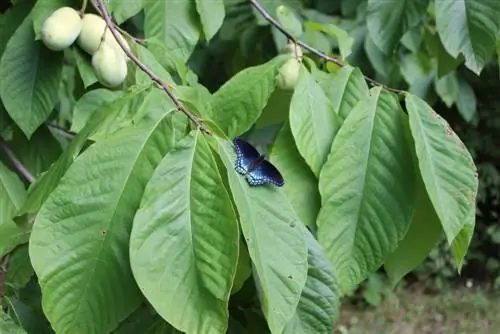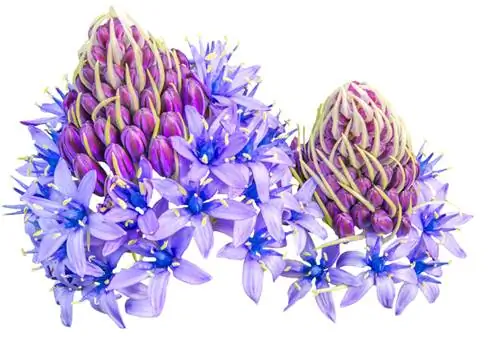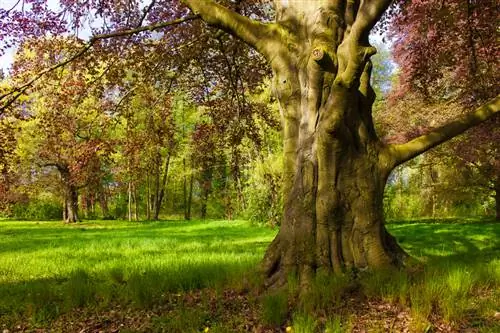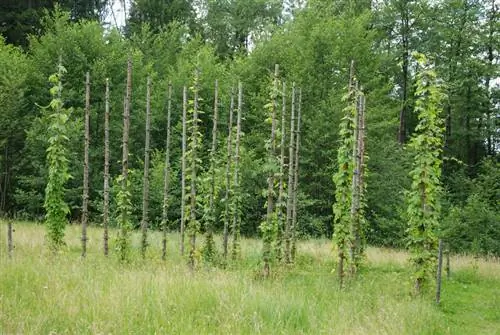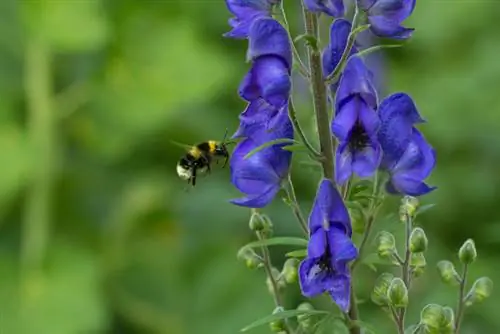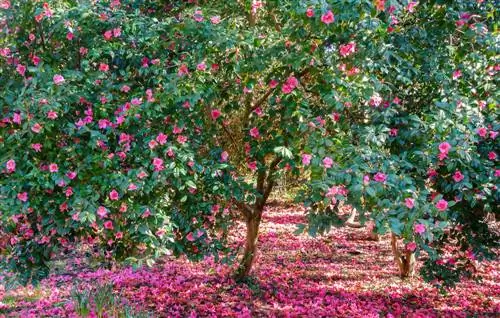- Author admin [email protected].
- Public 2023-12-16 16:46.
- Last modified 2025-01-23 11:22.
Indian trees are not native to us. In order for them to thrive and bear delicious fruit, they must be cared for from A to Z. In addition to the usual care activities such as watering and fertilizing, pollinating the flowers is also a serious task for the owner.
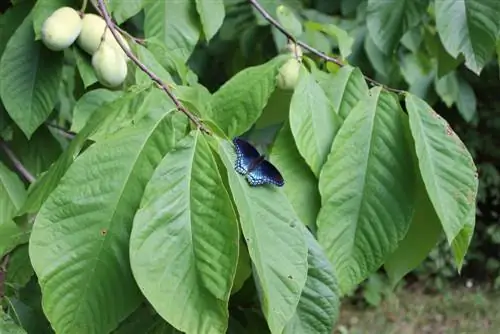
How do I properly care for an Indian banana?
Indian banana care includes regular watering, spring fertilization, occasional pruning, manual pollination and hardy overwintering. Container and young trees require special protection in winter. Some varieties are self-pollinating, but cross-pollination is advisable.
Pouring
The task of watering this tree must be taken seriously. In its native North America, it is not used to drought. He also needs to be protected from this at all costs.
- water as needed and depending on the weather
- especially young trees
- Bucket specimens have higher water requirements
- water up to twice a day in summer
- do not cause waterlogging
Fertilize
An Indian tree will survive even with small amounts of nutrients. But fruit production will suffer significantly as a result. That's why it makes sense to fertilize it at regular intervals. Its requirements are similar to those of local pome fruit.
- fertilize in spring
- Use an organic long-term fertilizer (€12.00 on Amazon)
- z. B. Compost or horn shavings
- A supply of potassium is important during the growth phase
Cutting
This tree tolerates pruning. However, since it grows very slowly, it is recommended not to cut it at all for the first few years. Later it is completely sufficient if, after harvesting the fruit, dead or disturbing branches are cut with clean, sharp scissors or saw. Root suckers should be separated deep in the soil.
The Indian banana is often trained as a spindle tree. In such a case, you must of course cut according to the instructions.
Tip
All varieties bloom on the previous year's wood. Don't cut off too much of it so that the next harvest doesn't fail or turn out to be modest.
Fertilize
Most varieties need a cross-pollinator nearby. The Prima and Sunflower varieties are self-pollinating and ideal as pollinators of other varieties. However, fertilization cannot take place optimally because the flowers of this tree are avoided by local bees. That's why the owner has to help:
- take some pollen with a brush
- dab on flowers of the other plant
Wintering
Indian trees are hardy. Only young trees should remain in pots for the first few years and overwinter in a frost-free winter quarters. Potted specimens need a protected place in winter. In addition, the bucket should be placed on Styrofoam and wrapped with fleece.

